SET THE TABLE, PORTUGUESE ESSENTIALS
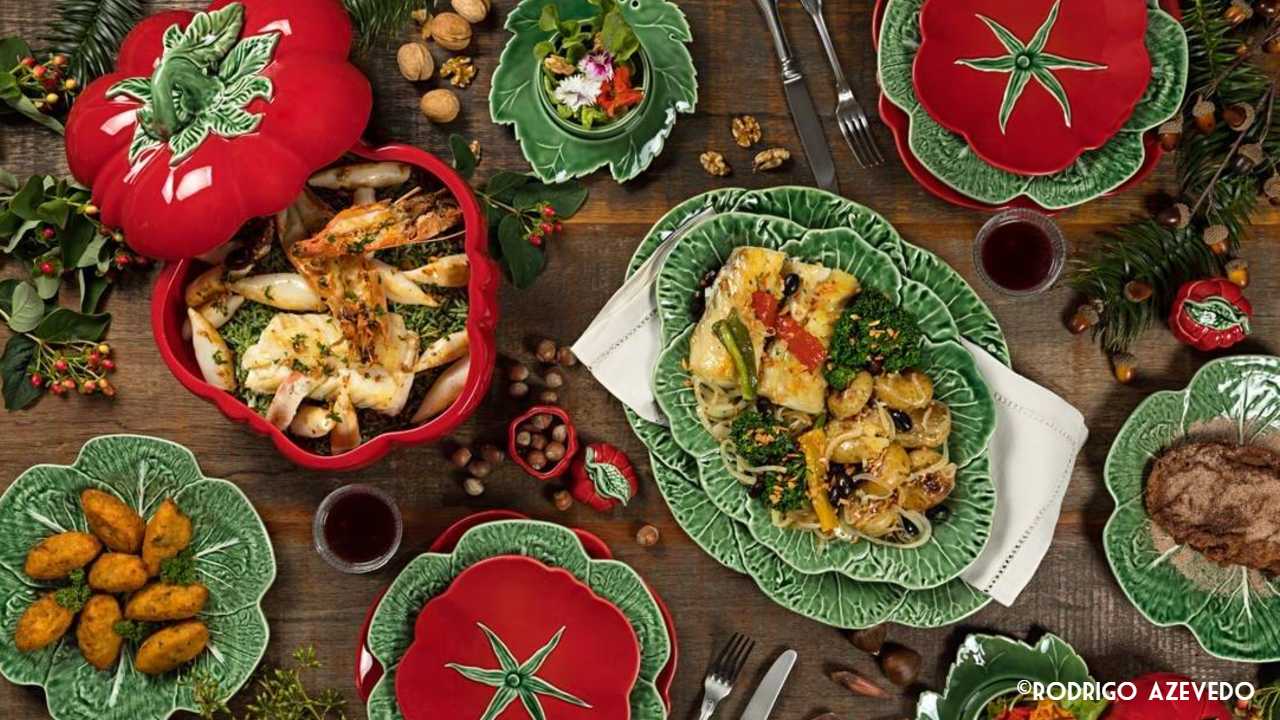
Portuguese people love to host and many well-known Portuguese industries and crafts exist to supply this tradition.
When it comes to food, Portuguese people make it a happening!
A meal is much more than eating, all round the world and in Portugal is no exception. It’s the gatherings, the love for hosting, the long chattings over a feast, about everything and especially food, the laughs and happiness and the affection put into cooking and preparing.
Portuguese people love to host and many well-known Portuguese industries and crafts exist to supply this tradition.
If you’re planning this holiday season or any other event, we suggest you add a Portuguese touch to your table with the following local cherished essentials.
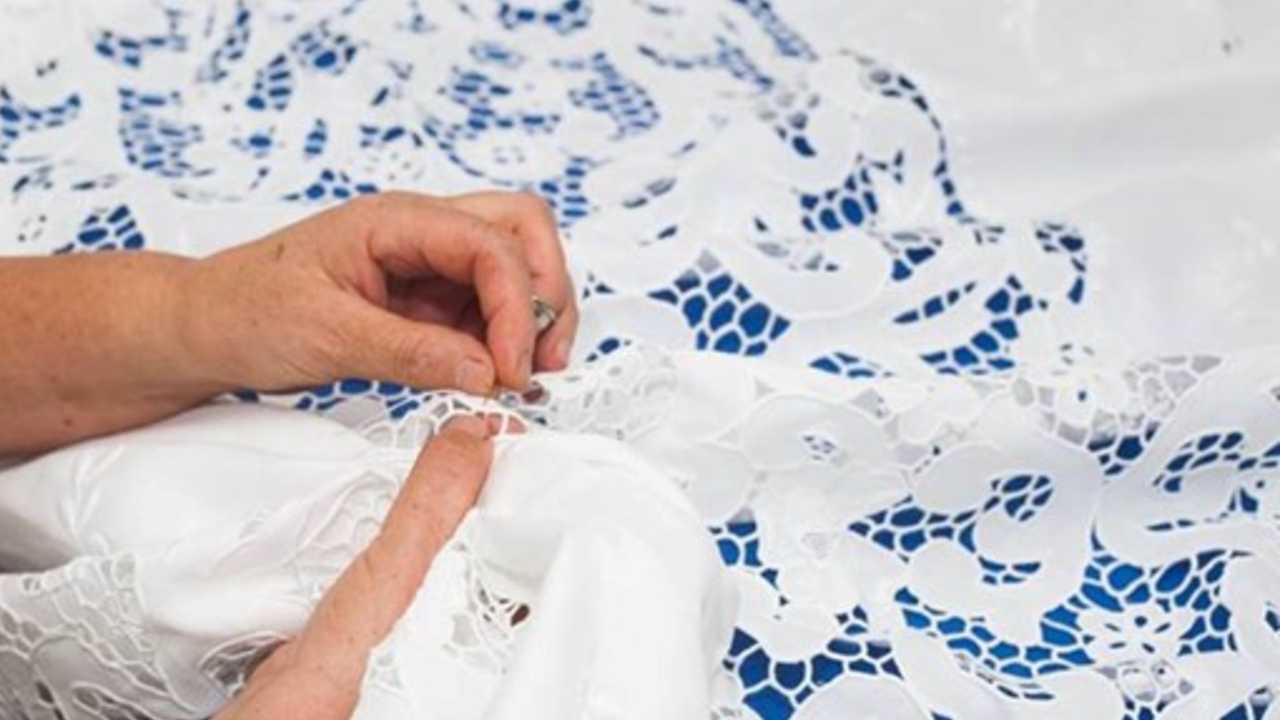
START WITH TABLECLOTHS AND NAPKINS
Portuguese embroidery and lace are an important tradition of the country, that stands out in each region, for the materials and the techniques used, and also for the bases where the embroidery is incorporated.
For table linen, the most coveted one is the Madeira island embroidery.
Madeira embroidery factories are located in Funchal, but traditionally, embroiderers work at home, all over the island.
The fabrics used are linen, silk, cotton, and organdy, embroidered with garanito, shadow, bastidos, rope, or eyelet stitches in an intricate and very rich way.
This craft is a thorough and delicate process and involves many hours, days, or months of work. That is why these pieces are generally expensive, but highly appreciated.
In many Portuguese houses, it is common to have a set of tablecloth and napkins ornamented with Madeira embroidery, cherished and kept for special occasions.
The beauty of these embroideries stands out especially when placed on a linen towel of contrasting color, underneath.
If you wish to buy Madeira embroidery tableware try BORDAL Online Store.

SET THE DISHWARE
Wedding lists usually include a good and exquisite table set for the new couple to receive family and friends at home.
In Portugal tradition says that this set should be from one of the most renowned and international brands in the country regarding tableware and decoration – Vista Alegre.
Vista Alegre was founded at the beginning of the 19th century, with the opening of a porcelain and glass factory in the Aveiro region, an area rich in fuels, clay, fine white sand, and crystallized pebbles, essential elements for the production of these pieces.
Throughout its course, this Portuguese brand, which has always been closely associated with Portuguese history and cultural life, has acquired an enormous projection due to its quality and investment in innovation and design.
Nowadays, Vista Alegre is one of the Portuguese luxury brands with worldwide recognition.
This large Portuguese business group has incorporated other brands that produce glass and crystals and has established partnerships with renowned national and international names in the areas of fashion, art, design, and architecture, for the constant creation of new collections and limited editions.
This list includes Christian Lacroix, Claudia Schiffer, Joana Vasconcelos, Stephen Jones or Álvaro Siza Vieira, among many others.
The most traditional table set collection of this brand is Cozinha Velha, with a classic design in shades of blue (pic above).
But every year the brand launches new themes and at Christmas time there is always a thematic design to decorate the tables.
We leave you with a warning: anyone who enters a Vista Alegre store hardly resists the temptation to buy a thousand beautiful pieces.
If you want your Christmas table to stand out and become unforgettable, head to Vista Alegre online store.
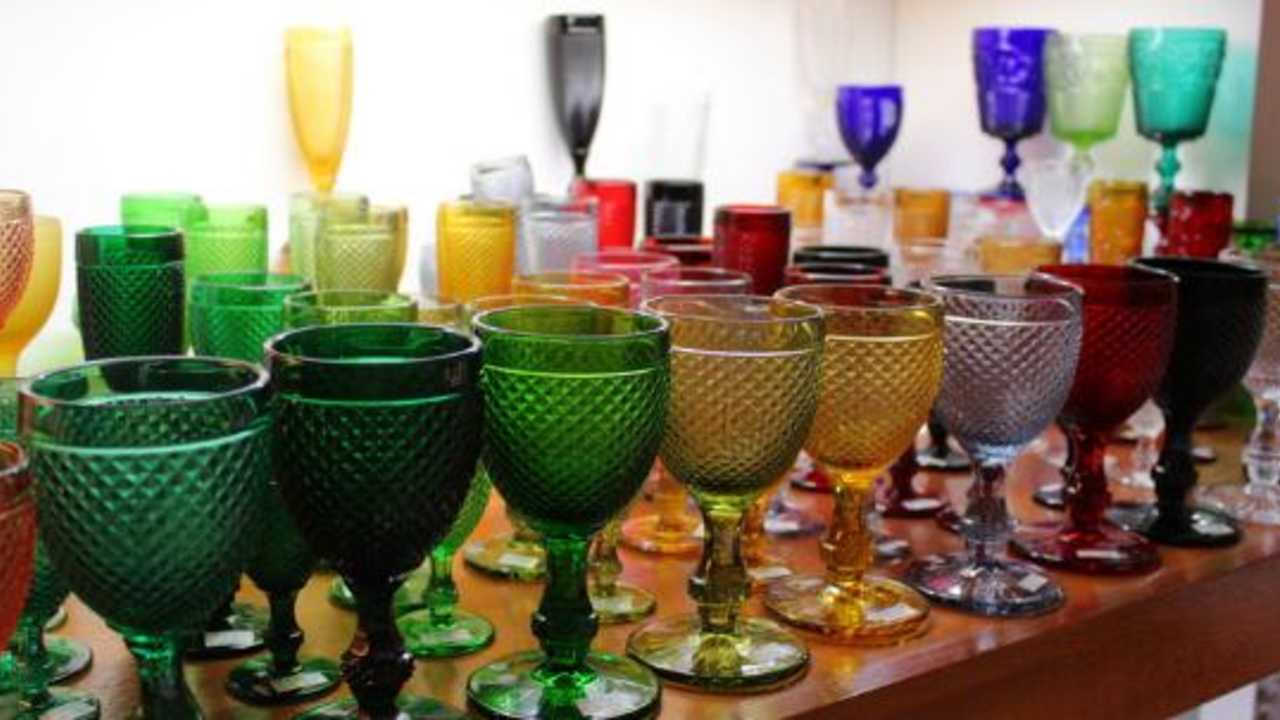
FOR THE CHRISTMAS TOASTS
The biggest and unmistakable national reference in the production of glass is the Depósito da Marinha Grande.
In 1748, John Beare opened a glass factory in Marinha Grande, due to the abundance of raw materials, such as firewood, silica and the good clays abundant here in this region.
Later in 1769, the English businessman Guilherme Stephens invested in the most refined machinery of the time and the factory acquired great prestige, reaching the status of “Real Fábrica de Vidros”, a classification similar to the English seal “by appointment to the queen/king”.
The history of this brand is inevitably linked to the path of the glass industry in Portugal.
The production quality of hand blown glass pieces from the Depósito da Marinha Grande is second to none and the design of these products is fascinating.
The best seller of this brand is the collection of spout cups and there is no Portuguese house without at least one copy of these cups. Whether by family inheritance or influenced by the wave of vintage fashion that extends to various products.
The variety of colors in this collection gives life to any table, even the simplest.
Vista Alegre also sells these glasses, so find your favorites!
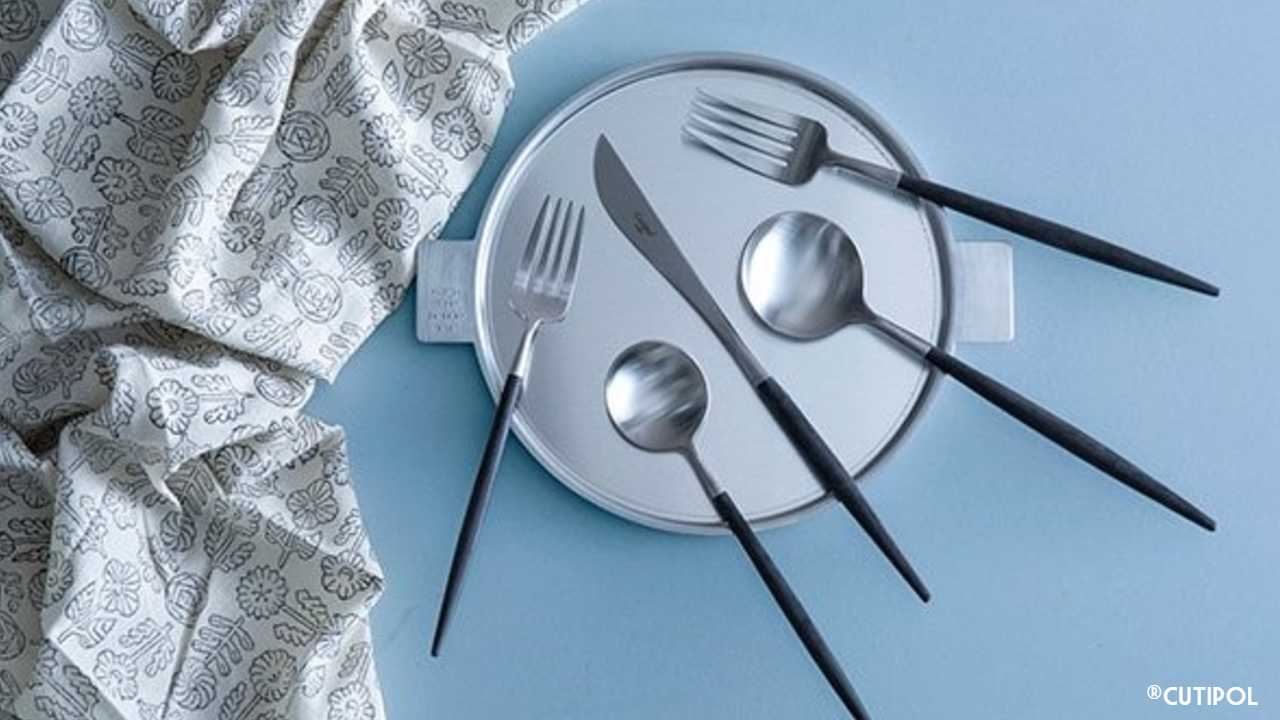
AS FOR CUTLERY
Since the 1960s, the Portuguese brand of handmade cutlery Cutipol has guided the choice of Portuguese families.
Whether for day-to-day or special occasions, the products of this brand combine quality, functionality, and design and since the 1980s it has expanded in recognition at an international level.
Handmade art has evolved to adapt to production processes that guarantee the meticulous selection of raw materials as well as an ergonomic study of shapes, proportions, and surface finishes.
The details of each collection transform this tableware into statement pieces and even the most classic model of the brand, Athena, has been reinterpreted in the novelties they launch, introducing a golden touch to stainless steel and combining elegant colors.
This Portuguese brand is continuously surprising, having recently launched a collection of oriental inspiration, Goa, which includes sets of chopsticks.
In addition to the cutlery, it also sells accessories for its maintenance and cases to store the sets, as well as kitchen accessories.
If you want to add pieces of unique design to your table, enter Cutipol’s online store and lose your mind.
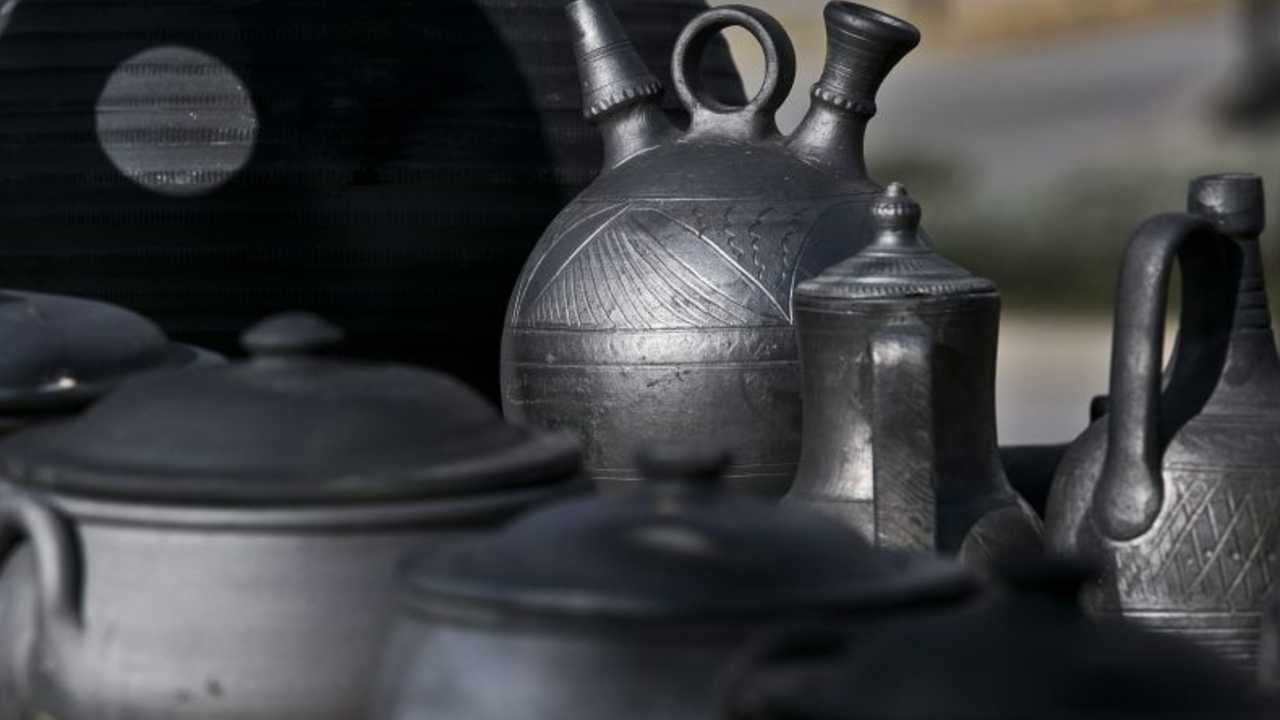
DIRECTLY FROM THE OVEN TO THE TABLE
Clay is probably the most used material in several Portuguese artistic expressions.
Serving as a basis for the production of the world-famous and coveted tiles that cover the facades of so many buildings in Lisbon and decorate the walls of so many churches and palaces in the country, are wonderfully sculpted in the hands of potters and artisans.
Those who visit Lisbon are always curious to discover the unique and beautiful design of handmade ceramics.
At the Portuguese table, clay is highlighted by the practicality of being able to be used for cooking and serving and by the comfort of maintaining the heat of the meals in the winter or the freshness of the cool water in the summer.
The Portuguese art of pottery combines the usefulness of clay with the design of the pieces it produces and in Portugal, there is a type of clay and a process that was recently considered a UNESCO Intangible Cultural Heritage: the Bisalhães black clay.
The production of these pieces is considered a tough, demanding job, using processes that date back to at least the 16th century.
The manufacturing process includes everything from the initial treatment of clay to cooking.
The pieces that are born by the hands of these artisans are then cooked in old ovens open in the earth, where straw and forest vegetation are burned and then smothered with dark earth, the same that will give it the black color.
There are currently very few potters who dedicate themselves to this art from the north of the country, in the region of Vila Real de Trás-os-Montes.
It is therefore precious to take the opportunity to buy some pieces of this material when we find them at traditional fairs up in the north region or even in some stores and design projects that have modernized these utilitarian and decorative pieces.
Take a look at the DOME Ethical store and discover the Bisarro collection.
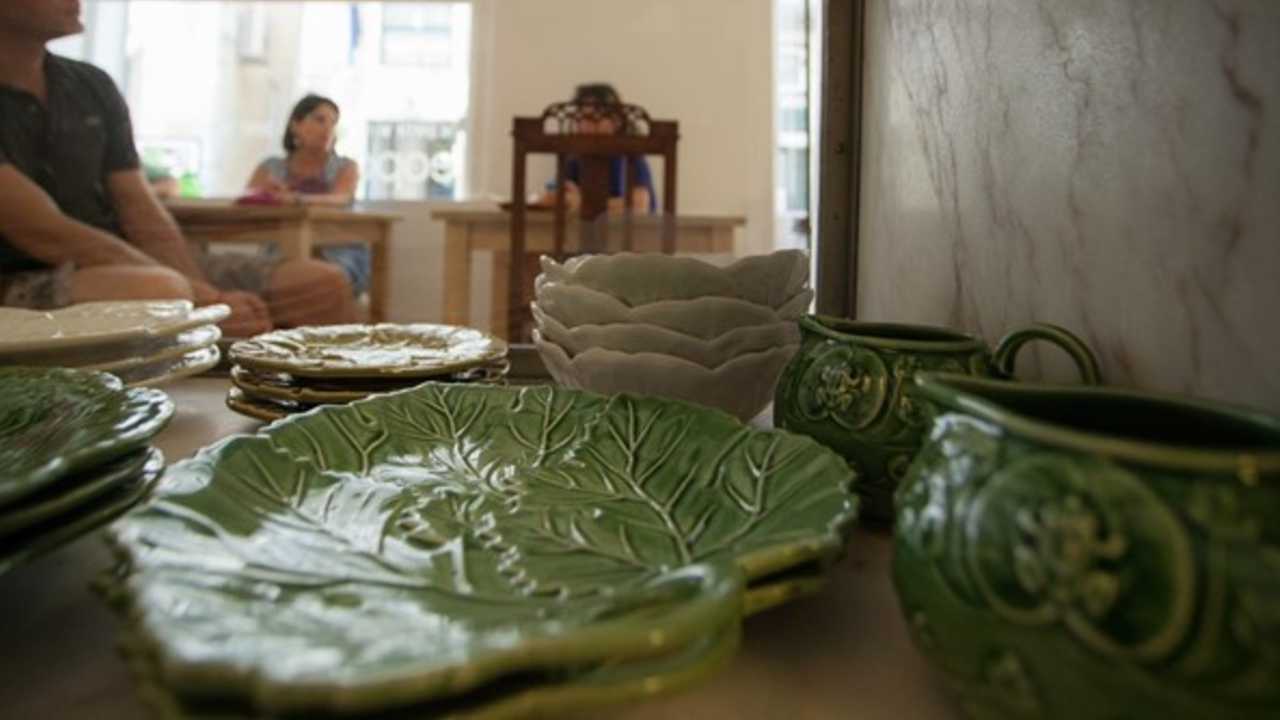
PLATTERS AND POTS FOR SERVING
It doesn’t get more popular and traditional than this: Bordallo Pinheiro ceramics.
Raphael Bordallo Pinheiro is one of the most relevant personalities of 19th-century Portuguese culture, with a notable production, namely in the areas of humorous drawing, caricature, and ceramic creation.
His name will be forever closely linked to the artistic ceramics that he started producing in 1884 at the Earthenware Factory in Caldas.
In all Portuguese houses there is a piece by Bordallo Pinheiro, be it a tile, a pot, a table centerpiece, a jug or a jar, a bust, plates, dishes, terrines, or even a sculpture of a large animal.
Bordallo Pinheiro’s pieces, heavily influenced by the Art Nouveau aesthetic and nature inspired, are kitsch and therefore have been targeted by the preferences that fashion dictates.
In the 80s and 90s, they lost prominence and many people rejected these pieces of great visual impact.
However, at the end of the 20th century and the beginning of the 21st century, the brand benefited from a revival by the search for vintage pieces, launched new products and new designs in partnership with different Portuguese artists, namely with the launch of ceramic sardines in the context of a popular contest integrated with the Lisbon Summer Festivities that take place in June.
The truth is that there are no plates, platters, or terrines more original than those of Bordallo Pinheiro and a table decorated with these pieces is always the most outstanding and festive table.
Enter the Bordallo Pinheiro online store and let your imagination run wild!
Now that you know the way to choose all the essential Portuguese details to originally embellish your table, get inspired to cook some Portuguese simple recipes to host and surprise your guests.
If you like to wander the world through real food and real people stories, indulge yourself in our blog and follow us at Instagram and Facebook. Dinner is served!
Feed your curiosity on Portuguese food culture:
Lisbon and its sustainable way of living
Our 5 favorite spots in Lisbon for stunning sunsets
The ultimate guide for the best Portuguese soups
10 Christmas foods you must eat in Portugal
Portuguese traditional Easter recipes
Real people, real food. Come with us to where the locals go.
Signup for our natively curated food & cultural experiences.
Follow us for more at Instagram, Twitter e Youtube
